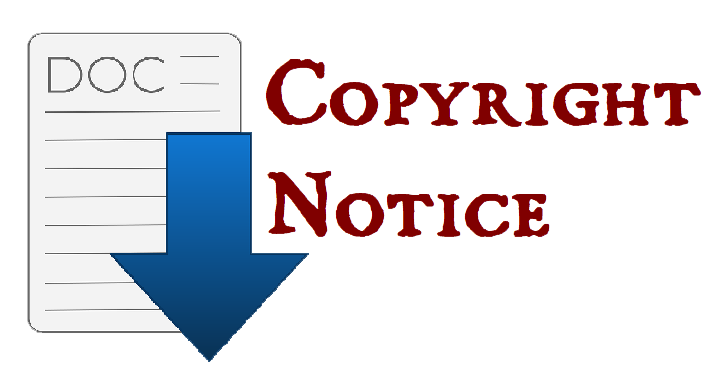The Effect of Digital Wordless Picture Books to Improve Students Ability in Writing Narrative Text at SMP Islam As-Shofa Pekanbaru
DOI:
https://doi.org/10.31503/madah.v14i2.596Keywords:
media, writing, digital wordless picture books, narrative textAbstract
This research aims to introduce teaching media based on technology using digital wordless picture books to improve students’ narrative writing abilities. This teaching media is presented in the form of PDF and e-books. The research design in this research used quasi-experimental. The instrument in this research used writing test. The subject in this research are the eighth-grade students of SMP Islam As-Shofa Pekanbaru. Purposive sampling technique was employed to select the sample. The result of normality test indicate the data is normal distribution and the homogeneity test is homogeneous. The calculation of the Independent Sample T-test shows that the p-value for the posttest data of the experimental group and the control group is p = 0,002 < 0,05. The result of the Independent Sample T-test indicate a that the Digital Wordless Picture Books media is effectively used in improving students’ ability in writing narrative text to the eighth-grade students of SMP Islam As-Shofa Pekanbaru.References
Gautam, Pitamber. 2019. “Writing Skill: An Instructional Overview.†Journal of NELTA Gandaki 2:74–90. doi: 10.3126/jong.v2i0.26605.
Gusmuliana, Paidi, and Mardiana Fitri. 2016. “The Effect of Using Wordless Picture Books Strategy on Students’ Ability in Writing Narrative Paragraph.†Ijielt 2(2):171–84.
H.Douglas Brown. 2007. [H._Douglas_Brown]_Teaching_by_Principles,_Second_(BookFi.Org).Pdf.
Halimah Nur, Siti. 2018. “THE EFFECT OF WORDLESS PICTURE BOOK TO TEACH WRITING AT THE EIGHT GRADE STUDENTS OF SMPN 1 PLOSOKLATEN.†Bitkom Research 63(2):1–3.
Hasan, Subakti Bagus Nanang. 2017. “The Correlation Between Vocabulary Mastery and Writing.†JELLT: Journal of English Languagr and Language Teaching 1(2):55–61.
Indriyani, Lemi. 2019. “Pemanfaatan Media Pembelajaran Dalam Proses Belajar Untuk Meningkatkan Kemampuan Berpikir Kognitif Siswa.†Prosiding Seminar Nasional Pendidikan FKIP Universitas Sultan Ageng Tirtayasa 2(1):17–26.
Maming, Khadijah, Irmayanti Irmayanti, and Rafi’ah Nur. 2019. “Using Wordless Picture Book as a Contributive Learning Media to Enhance the Student’s Writing Ability.†Eduvelop 3(1):27–34. doi: 10.31605/eduvelop.v3i1.356.
Rahmawati, Melinda, Ahmad Ruslan, and Desvian Bandarsyah. 2021. “The Era of Society 5.0 as the Unification of Humans and Technology: A Literature Review on Materialism and Existentialism.†Jurnal Sosiologi Dialektika 16(2):151. doi: 10.20473/jsd.v16i2.2021.151-162.
Rochania, N., Y. Astutik, and V. Mandarani. 2021. “Wordless Picture Books: A Media to Facilitate Students in Writing Descriptive Text.†Proceedings of the 1st Paris Van Java International Seminar on Health, Economics, Social Science and Humanities (PVJ-ISHESSH 2020) 535(1):126–31. doi: 10.2991/assehr.k.210304.029.
Rusmana, N., and D. Suprihatin. 2019. “A Quasi Experiment on Group Exercises to Improve Students’ Resilience.†Journal of Physics: Conference Series 1318(1). doi: 10.1088/1742-6596/1318/1/012128.
Sarasvathy, Saras. 2013. “Research Instruments.†Effectuation 16(December). doi: 10.4337/9781848440197.00027.
Serafini, Frank. 2014. “Exploring Wordless Picture Books.†Reading Teacher 68(1):24–26. doi: 10.1002/trtr.1294.
Smith, Gail, G. 2003. “Stimulating Critical Thinking with Wordless Books.†The Ohio Reading Teacher 36(1–2):75–80.
Yang, Ching-Han, Jui-Ching Cheng, and Mei-Ju Chou. 2016. “Empowering Children’s Creativity with The Instruction of Wordless Picture Books.†European Journal of Research and Reflection in Educational Sciences 4(7):1–16.
Downloads
Published
How to Cite
Issue
Section
License
Copyright (c) 2023 Indri Romansyah Pohan

This work is licensed under a Creative Commons Attribution-NonCommercial-ShareAlike 4.0 International License.
The author who published an article in the Madah journal has agreed on the following points.
- Author retain copyright and grant the journal of first publication with the work simultaneously licenced under Creative Commons Atribution Licence (CC BY-NC-SA 4.0) that allows other to share the work with an acknowledgement of the work's authorship and initial publication in this journal.
- Authors are allowed to publish articles that have been published by the Journal of Madah through separate contractual agreements for non-exclusive dissemination (e.g, placing them into an institutional repository or publishing them in a book) by keeping the first issue in the Madah journal.
- Authors are permitted and encouraged to disseminate their work in cyberspace (e.g, in institutional repositories or author pages) before and during the submission of the text document as it can support productive exchange of earlier and broader credits.










